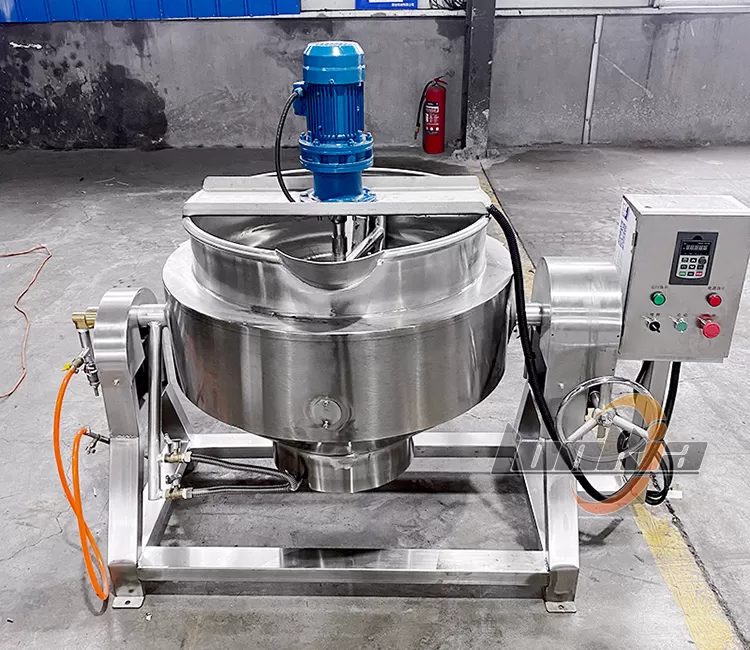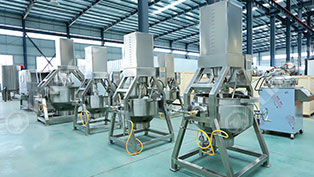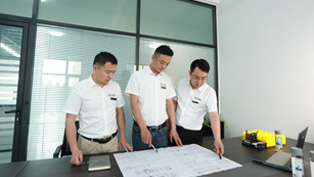A jacketed kettle pot is one of the most versatile and efficient pieces of equipment used in food processing today. Designed to provide precise temperature control and uniform heating, it plays a crucial role in cooking, mixing, and holding food products across a wide range of industrial applications. Its double-wall design allows steam, hot water, or thermal oil to circulate in the jacket, delivering indirect heat that helps preserve flavor, texture, and nutritional value.
1. Sauces, Soups, and Gravies
One of the most common applications of a jacketed kettle pot is in the production of sauces, soups, and gravies. Whether it’s a tomato-based pasta sauce, a creamy mushroom soup, or a rich meat gravy, the kettle ensures even heating and thorough mixing. With options for planetary stirring, it can prevent scorching and deliver a smooth, consistent product ideal for packaging or further processing.
2. Jam, Jelly, and Confectionery
In jam and jelly manufacturing, precise control over temperature and mixing is critical to avoid crystallization or burning of sugar. Jacketed kettles offer that control and allow operators to produce large batches with consistent results. In confectionery applications, they are used for melting chocolate, cooking candy syrups, and blending ingredients for sweets, delivering homogeneity and texture consistency.

3. Dairy and Cheese Processing
Dairy plants frequently use jacketed kettles for pasteurization and cooking processes. They are especially useful in producing processed cheese, yogurt bases, and milk-based desserts. The gentle heating system minimizes protein damage, preserves quality, and ensures product safety. Optional agitators can enhance mixing of stabilizers or flavorings during batch preparation.
4. Ready-to-Eat Meals and Fillings
Jacketed kettles are widely adopted in ready-to-eat (RTE) meal production for cooking meat fillings, vegetable mixes, pasta sauces, and rice-based dishes. Their ability to cook and mix large volumes in one vessel reduces transfer steps, maintains hygiene, and boosts efficiency. Some systems are equipped with tilting mechanisms or bottom discharge valves for easy product unloading.
5. Beverages and Concentrates
Beverage processors use jacketed kettles for heating and blending fruit purees, concentrates, and syrups. For example, the preparation of bubble tea syrup or fruit compotes often requires gentle cooking to preserve the integrity of ingredients. The kettle’s precise control helps in achieving the right consistency and concentration, which is critical for beverage formulations.
Conclusion
From savory meals to sweet delicacies, the applications of a jacketed kettle pot in the food industry are diverse and essential. Its ability to deliver consistent, high-quality results while optimizing cooking time and energy use makes it a fundamental asset in any commercial food processing facility.



